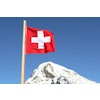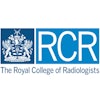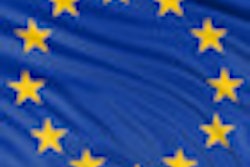
The growing storm over pricing policies at academic publishing giant Elsevier does not appear to have reached radiology's shores, according to Dr. Hans Blickman, editor-in-chief of the European Journal of Radiology (EJR), an Elsevier title. Still, radiologists are likely to see more open-access articles as EJR adapts to the changing publishing environment.
In January, mathematician Tim Gowers called in his blog for a boycott of Elsevier, accusing the publisher of charging "very high prices" and also of bundling its journals together so that libraries allegedly have to pay high prices for unsolicited journals in order to get access to the few they want, affecting their budgets for other material.
But the much-publicized boycott hasn't had any discernible impact in radiology, apparently.
 Dr. Hans Blickman
Dr. Hans Blickman
"As far as the radiology titles are concerned, we haven't had any feedback from our readership or contributors. The first I heard of the boycott was from a board member who had picked up the information from a CNN newsfeed," Blickman said. "Elsevier is working to bring down costs. Eight of its journals already operate an open-access model, and there are more planned open-access journals for the future. In addition, 1,100 Elsevier journals including EJR currently offer authors the opportunity to make their papers open access."
Some of EJR's articles, though not all, can be freely accessed on the Internet already, while others are paid for through electronic subscription in which the effective price per downloaded article is approximately 1.50 euros ($2 U.S.). The 220-page monthly radiology journal has already seen its paper subscriptions dwindle to around 100 per year compared with more than 6,000 institutions that have paid for electronic access.
Changing publishing model
The Elsevier row highlights the ongoing challenges that academic publishers face in adapting to the online world, and in particular the rise of the open-access model.
Whilst EJR does offer its authors the option to make their articles open access, other radiology publications, including Clinical Radiology, do not yet offer extensive open-access options, but the publisher, in discussion with its society partners, is said to be actively considering alternative publishing models.
One idea currently under development to facilitate increased access to EJR content is to offer readers journal-specific apps that would alert and direct radiologists to the latest articles in their subspecialties. These apps might also feature advertisements to generate income to replace what's being lost from advertisements in printed journals, according to Blickman.
With regard to the boycott itself, Blickman was more circumspect about its direct impact on EJR's print and electronic copy sales, as well as contributing authors' willingness to submit radiology articles.
"Elsevier's medical publications don't operate in the same way as its math, chemistry, and physics journals. We review quickly, put the accepted article online in about four weeks, and unfortunately then take up to a year to appear in print," Blickman said. "By contrast, the scientists depend on getting papers into print -- submissions are often rejected or sent back to authors to be rewritten, prolonging an already lengthy process. And then after all their hard work, the writers themselves have to pay for expensive reprints, which we at EJR have abandoned."
Blickman added that a further brake to any impulse to boycott among radiologists is that free online access to headlines and abstracts often suffices, while for other subjects downloading the entire article is necessary to obtain details such as formulas. In addition, the global outreach program GO RAD, established by the International Society of Radiology, is cooperating with major radiology journals to provide open access to some otherwise restricted-access content.
Other radiologists have commented that the boycott may have limited influence on specific titles.
"It is possible that a boycott will impact on radiologists' willingness to contribute to, edit, or buy Elsevier publications, but it is not clear to what extent. The topics of the boycott are clear. However, I've not received complaints about Elsevier so far," said EJR contributor Dr. Alberto Tagliafico, a radiologist and an assistant professor of human anatomy at the department of experimental medicine at the University of Genova in Italy.
Another senior radiologist noted that doctors need to publish swiftly and reach a large readership, and, for this reason, he doubted that such a boycott would appeal to radiologists.
"In the short term, it would seem logical to bring our pricing in line with competitors, if that isn't the case already, but let's not forget that titles such as Radiology and RadioGraphics are owned by RSNA, not a commercial publisher, which may affect pricing policies," Blickman said. "In the longer term, we are actively looking at making our radiology products more open access, given our mission is to get new information out there into the public sphere."



















